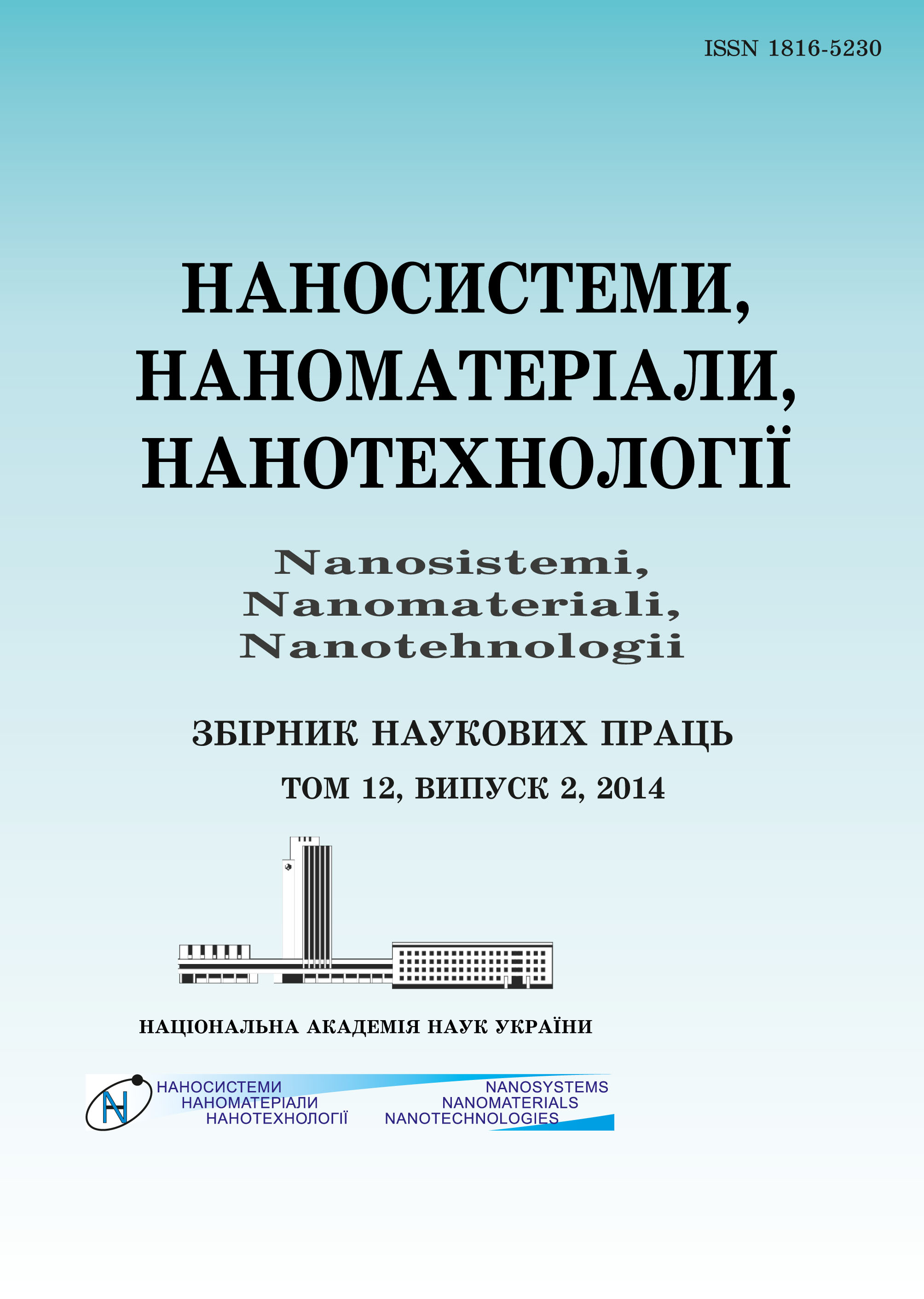|
|
|||||||||
 |
Year 2017, Volume 15, Issue 2 |
|
|||||||
|
|||||||||
Выпуски/2017/том 15 /выпуск 2 |
N. O. Derevyanko, O. O. Ishchenko, A. V. Kulinich, L. F. Sharanda, S. V. Shulga, V. M. Ogenko
«Interaction of Polymethine Dyes of Different Ionicity and Carbon Nanostructures»
337–344 (2017)
PACS numbers: 68.37.Lp, 78.40.Ri, 78.67.Ch, 81.07.Nb
Synthesis of preparative amounts of stable dispersions of graphite, partially oxidized graphite, and oxidized graphite modified with ethylenediamine nanostructures in organic solvents (ethanol and dioxane) is worked through. The interaction of polymethine (anionic and cationic) dyes with different types of carbon nanostructures in ethanol solutions is investigated. As found, the absorption spectra of dyes in dispersions of nanographite are a superposition of the spectral curves of the individual components that indicates the absence of strong specific interactions between them. In contrast, in dispersions of nanotubes, a rapid decrease in the absorption-band intensity of dyes is observed in the course of time to reach some saturation equilibrium. As shown, the two- and multiwalled carbon nanotubes absorb greater amount of dye per unit weight than single-walled ones. This is probably due to the intercalation of dye molecules into two/multiwalled nanotubes. Moreover, there is stabilization of the suspension of nanotubes in the presence of dyes, i.e. a decrease in the sedimentation rate.
Key words: graphene-type structures, nanotubes, polymethine dyes, UV/Vis spectra.
https://doi.org/10.15407/nnn.15.02.0337
REFERENCES
1. K. S. Novoselov, A. K. Geim, S. V. Morozov et al., Science, 306, No. 5696: 666 (2004).
https://doi.org/10.1126/science.1102896
2. M. Arikawa, Nanotechnology Perceptions, 2, No. 3: 121 (2006).
3. M. C. Hersam, Nature Nanotechnology, 3, No. 7: 387 (2008).
https://doi.org/10.1038/nnano.2008.135
4. A. M. Zinatdinov, Izv. VUZov. Khimiya i Khimich. Tekhnol., 56, No. 7: 3 (2013) (in Russian).
5. G. Ning, T. Li, J. Yan, C. Xu, T. Wei, and Z. Fan, Carbon, 54: 241 (2013).
https://doi.org/10.1016/j.carbon.2012.11.035
6. K. Kusakabe and M. Maruyama, Phys. Rev. B, 67: 092406 (2003).
https://doi.org/10.1103/PhysRevB.67.092406
7. A. A. Ishchenko, Russian Chemical Reviews, 60, No. 8: 865 (1991).
https://doi.org/10.1070/RC1991v060n08ABEH001116
8. A. Mishra, R. K. Behera, P. K. Behera, B. K. Mishra, and G. B. Behera, Chem. Rev., 100, No. 6: 1973 (2000).
https://doi.org/10.1021/cr990402t
9. F. Wurthner, T. E. Kaiser, and C. R. Saha-Moller, Angew. Chem. Int. Ed., 50, No. 15: 3376 (2011).
https://doi.org/10.1002/anie.201002307
10. N. N. Ledentsov, V. M. Ustinov, V. A. Shchukin, P. S. Kop'ev, and Zh. I. Alferov, Semiconductors, 32: 343 (1998).
https://doi.org/10.1134/1.1187396
11. V. D. Pokhodenko, O. A. Khazeyeva, O. Y. Posudiyevskyi, and V. H. Koshechko, Process for the Preparation of Graphene (UA Patent No. 77611. Published 25-02-2013) (in Ukrainian).
12. Z. Y. Xia, S. Pezzini, E. Treossi, G. Giambastiani, F. Corticelli, V. Morandi, A. Zanelli, V. Bellani, and V. Palermo, Adv. Funct. Mater., 23, No. 37: 4684 (2013).
13. A. V. Melezhyk and A. G. Tkachev, Nanosystems: Physics, Chemistry, Mathematics, 5, No. 2: 294 (2014).
14. K. F. Mak, L. Ju, F. Wang, and T. F. Heinz, Solid State Communications, 152: 1341 (2012).
https://doi.org/10.1016/j.ssc.2012.04.064
15. F. M. Hamer, Chemistry of Heterocyclic Compounds: The Cyanine Dyes and Related Compounds, 18: 790 (1964).
https://doi.org/10.1002/9780470186794
|
©2003—2021 NANOSISTEMI, NANOMATERIALI, NANOTEHNOLOGII G. V. Kurdyumov Institute for Metal Physics of the National Academy of Sciences of Ukraine.
E-mail: tatar@imp.kiev.ua Phones and address of the editorial office About the collection User agreement |